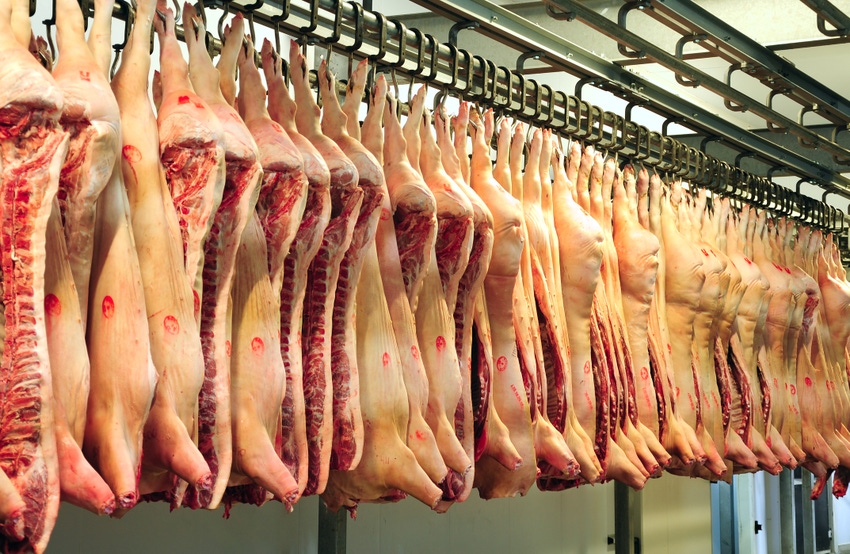Rule clarifies that "muscle cuts" of beef and pork must include whole carcasses, whether divided in half or further subdivided.
November 25, 2019

The U.S. Department of Agriculture’s Foreign Agricultural Service (FAS) published a final rule this week clarifying the requirements for reporting foreign sales of beef and pork under the Export Sales Reporting Program.
The rule clarifies that “muscle cuts” of beef and pork must include whole carcasses, whether divided in half or further subdivided into individual primals, sub-primals or fabricated cuts, with or without bone.
Carcasses that are broken down, boxed or sold as a complete unit are muscle cuts, USDA said. Total weight of carcasses reported may include minor non-reportable items (e.g., hooves) attached to carcasses.
Meats removed during the conversion of an animal to a carcass (e.g., variety meats such as beef/pork hearts and beef tongues ) are not muscle cuts, nor are items sold as bones practically free of meat (e.g., beef femur bones) or fat practically free of meat (e.g., pork clear plate) removed from a carcass.
Because timely reporting and publishing of agricultural export sales data is key to effectively functioning markets, the Export Sales Reporting Program was established in 1978 to enable USDA to monitor foreign sales of commodities including wheat and wheat products, feed grains, oilseeds and oilseed products, cotton, rice, cattle hides and skins and beef. In 2013, the program was amended to include weekly reporting requirements for pork.
The final rule may be viewed here.
You May Also Like

.png?width=300&auto=webp&quality=80&disable=upscale)

